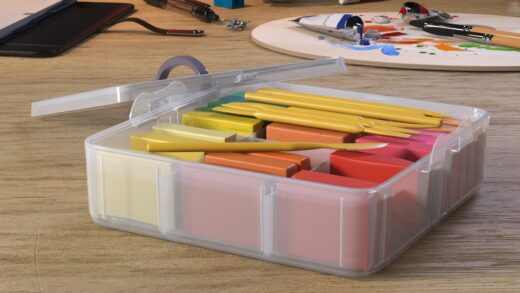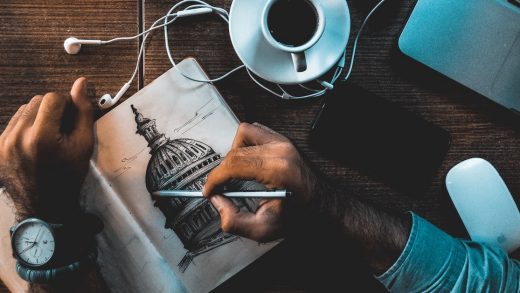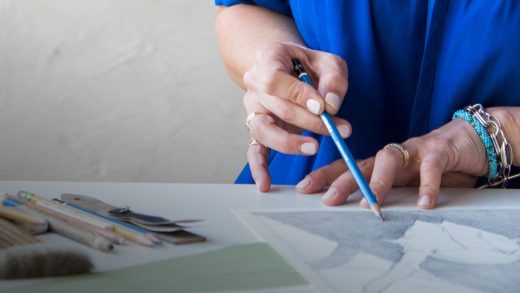Watercolour Essentials: Choosing the Right Pencils, Paints, Brushes, and Palettes
With its vibrant hues and expressive brushstrokes, watercolour painting offers a captivating and accessible medium for artists of all levels. The sheer versatility of watercolour allows for both delicate washes and bold, expressive strokes, making it a medium for exploring creativity and capturing the beauty of the world around us. Having the right equipment is essential to embark on a successful watercolour journey. From high-quality paints and brushes to suitable paper and palettes, the choices you make can significantly impact your painting experience.
Contents
Watercolour Pencils

Watercolour pencils offer a unique and versatile medium that combines the precision of drawing with the expressive qualities of watercolour painting. Using water to blend and soften the lines, can create a wide range of effects, from delicate washes to bold, expressive strokes. Allowing you to draw precise lines and details, a water colour pencil offers greater control over your artwork. You can use a precise and pigmented water colour pencil to create detailed drawings or wet them to achieve watercolour effects.
Watercolour pencils are easy to carry and use, making them ideal for on-the-go sketching and painting. They eliminate the need for carrying around tubes of paint and water jars, making them ideal for sketching on location or when space is limited. Whether you’re a beginner or an experienced artist, watercolour pencils offer endless creative possibilities. By layering colours and blending them with water, you can create stunning effects and depth in your artwork.
How to Use Watercolour Pencils Effectively
- Drawing: Use the pencils dry to create detailed outlines and sketches.
- Blending: Wet your brush and gently blend the pencil strokes to create soft washes and transitions.
- Layering: Experiment with layering different colours to achieve depth and complexity in your artwork.
- Adding Texture: Use a dry brush to create texture and interest in your painting.
Watercolor Paints
Watercolour paints come in various forms, each offering distinct advantages. Tube paints offer the greatest flexibility and control. They are ideal for mixing colours and creating a wide range of effects. Pan paints are pre-moistened and come in small pans, making them convenient for travel and outdoor painting. They offer a limited range of colours but are suitable for beginners and those seeking a more portable option. Cake paints are dry pigments pressed into cakes. They require water to be activated and offer a concentrated colour. Cake paints are often used for detailed work and precise brushstrokes.
Brushes
Watercolour brushes come in many types, each suited to different techniques and effects. Round brushes are versatile, allowing for fine lines and broad strokes, making them ideal for general-purpose painting. Flat brushes are excellent for creating sharp edges and bold strokes, perfect for covering large areas with a wash of colour.
Filbert brushes, with rounded edges, are great for blending and softening edges, while angle brushes offer precision for detailed work and can reach tight corners. When choosing brushes, consider the size and shape that suits your painting style, with the bristle material. Synthetic bristles are durable and are more affordable, while natural bristles, like sable, provide superior control and fluidity.
Palette
The palette you choose plays a role in your painting process, affecting how you mix and manage your colours. Plastic palettes are lightweight and affordable, making them a popular choice for beginners, though they may stain over time. Ceramic palettes are heavier and more durable, offering a smooth surface for mixing colours and are easy to clean. Porcelain palettes are the premium option, known for their non-porous surface that prevents paint from absorbing, ensuring accurate colour mixing.
When selecting a palette, consider its size, a larger palette provides more space for mixing, while a smaller one is easier to carry. Portability is another factor, especially if you paint on the go, along with the ease of cleaning; palettes that resist staining are easier to maintain and keep your colours true.
Paper
The type of paper you choose for watercolour painting significantly impacts the final result. Cotton paper is highly absorbent and durable, making it the preferred choice for professional artists due to its ability to handle multiple layers of paint without warping. Paperboard, while less absorbent, is more affordable and suitable for beginners or practice sessions. Choosing the right type of paper depends on your painting style and the techniques you plan to use, for instance, detailed work might require smoother, lighter paper, while textured, heavier paper suits more expressive styles.
Embracing the Watercolor Journey

To embark on a successful watercolour painting adventure, having the right equipment is essential. A well-stocked palette featuring high-quality watercolour paints, different brushes, suitable paper, and vital accessories will provide you with the tools to explore your creativity and bring your artistic visions to life.
Remember, watercolour painting is a journey of discovery and experimentation. Don’t be afraid to try new techniques, experiment with different colours, and let your imagination run wild. The beauty of watercolour lies in its versatility and the endless possibilities it offers. Embrace the joy of creating beautiful and expressive watercolour paintings. With practice and dedication, you’ll discover the magic of this captivating medium and unlock your artistic potential.

















